Table of Contents
- Long Division Method – Example
- What’s Next?
In the previous segment, we used the long division method to find the square root. In this segment, we will look at an example based on finding the square root of a number using the long division method.
Example
Q. Find the square root of 24649.
Solution:
Step 1: Write the division.
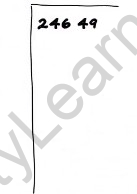
Step 2: Mark pairs of digits from the units end.
In this case, there are five digits but the method remains the same. 2 can be considered as 02.
So the pairs are 02, 46, and 49.

Step 3: Find the perfect square equal to or lower than the first pair from the left.
The first pair is 02.
1 is a perfect square and 1 ≤ 02.
Now, 1 = 12.
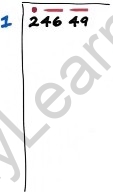
Step 4: Multiply above and add below.
1 × 1 = 1
1 + 1 = 2
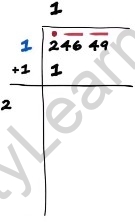
Step 5: Draw a box next to the sum and subtract the product from the number above it. 2 – 1 = 1
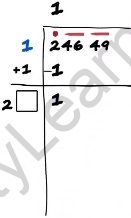
Step 6: Bring the next pair down. The next pair is 46.
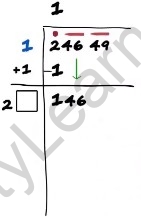
Step 7: Draw a box above and below.
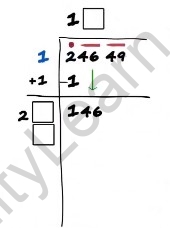
Step 8: Using trial and error find the digit in the boxes, which is the same for all the boxes. The number should be such that the product should be less than or equal to 146.
25 × 5 = 125
26 × 6 = 156
125 ≤ 146. Hence, the number in the box is 5.
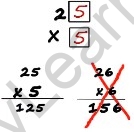
Step 9: Multiply above and add below.
25 × 5 = 125
25 + 5 = 30

